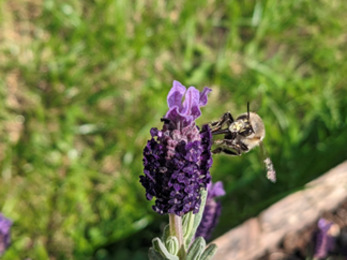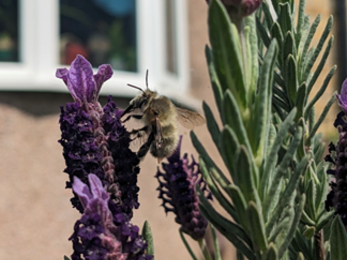Head down to a local park or wetlands and you will be near inundated by the cuteness of baby geese and young coots. And those that live in a more rural place will spend far too long standing by fences watching young cattle. But you see those are all distractions. Baby animals are marvellous, young waterfowl adorable, but the most fascinating spectacle, in my opinion at least, is the arrival of the bees.
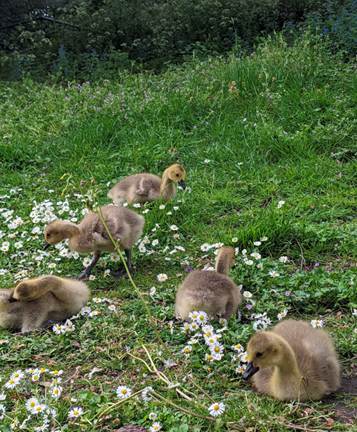
Millions of bees emerge each spring. It is that time of year when all our little buzzy friends come out of hiding and emerge not only from hives, but from burrows in the ground, holes in stone, hollow tree trunks, and brick walls - madness right?
I have had the pleasure of doing my traineeship through this wonderful period, and I have been lucky enough to see the seasons shift. Woodlands have gone from muddy and seemingly barren places, to areas flooded with tiny shoots of green. To vast and colourful spaces fit for fairy-tales with floors of bluebells, wild garlic and celandine, all in anticipation of the bees.
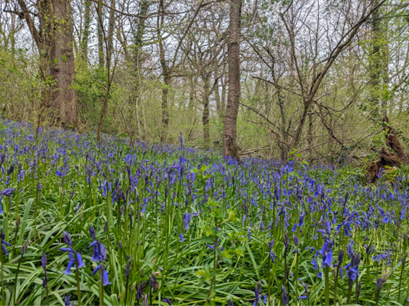
But colourful flowers aren't for the bees, you might say. Well, I'm afraid to say they are. The scents and colours we love, the ones we use to show love, are for the benefit of our little buzzing friends, guiding them, or more so persuading them, to come and pollinate this particular flower. It is an exchange of goods (pollen) done on a global scale, coordinated by season, and is a dance of mammoth proportions.
To be honest this is why I love spring. Sometimes the size of nature makes it hard to connect with it. I live in London. A place where nature fights for space with people. Sometimes it can be demoralising to see a new tower being built where there was once a tree. But not even the financial might of London can stop the bees. I love nothing more than coming to a little local park, after a brief visit to the ducks, finding a lovely bush to sit beside and wait for the bees. It doesn't even need to be a park. Find a flowering plant beside a road, in a garden, or a planter on the high-street, and just wait. Bring a book even but I doubt you will have much time to read it.
In front of my friend's house, there is a lavender bush, planted a few years ago. One day, after seeing a shape zipping by it, I stopped. It was a honeybee, a sleek and slender creature with a short nose and a striped abdomen. It was dutifully collecting the pollen, stowing it in big yellow piles on its legs, and reminded me very much of myself carrying shopping bags. I put the bags down. It was frantic, legs sorting, wings flapping, flying with incredible ease from each lobe of the flower to the next. It was rapid, an incredibly tiny creature with dexterity down to millimetre scale. But this was not the only bee on the bush. It had two honeybee companions, hive mates, I wondered, and another kind that I did not recognise.
Now if I wasn't so close to the bee I wouldn't have noticed they were different, because from afar they are just little buzzing spots. But here, half a meter away, the difference was astounding. It was far bulkier than the honeybee, furry with a deep black coat. This one hung off the flower with far less pose, stumbling slightly as it went. It was a bumblebee, remembering that famous idea that scientists don't understand how a bumblebee can fly because aerodynamically they should be incapable. But it wasn't a bumblebee either, for it had an orange leg. After much frantic picture-taking, being careful not to get too close, I found one that matched, the hairy-footed flower bee.
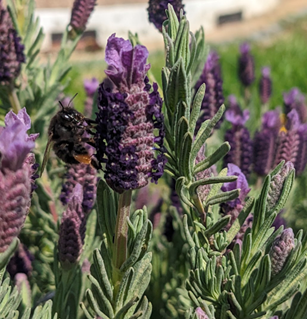
But this was not the best discovery to be made that day. Not long after that particular bee flew off to a neighbouring bush, another contender entered the fray. This one was different too. It had a mosquito-like snout so long it reached effortlessly into the tiny individual flowers on the bush, an elegant tapering body, and fur so pale it looked white. I blinked twice. Bees are supposed to be yellow and black. But this one wasn't.
This is how I found out that in an unassuming bush, and unassuming street, lived not one but at least three shrill carder bees; A type which I then learned was one of the rarest in the UK, restricted to a thin strip of the country that happens to intersect London.
Bees do a job that we barely see, work longer hours than most of us, and are the reason flowers are so beautiful. They pollinate the plants that feed us, help give us fruit, and are responsible for a significant percentage increase in the yield of our farms. The work bees do is speculated to add an incredible value to global food harvests, and to watch it happen you don't need to travel to some great engineering facility that produces fertiliser or equipment, you merely need to find a book, a bush, and sit for the afternoon.


